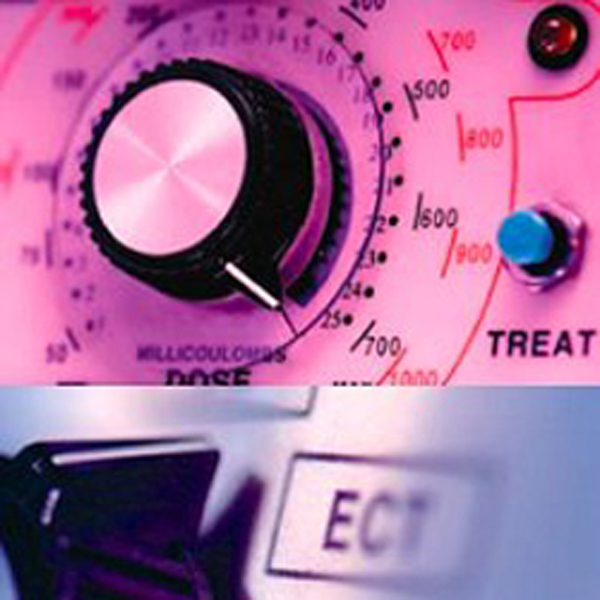By CCHR International
March 21, 2016
While the majority of the public believe electroshock is no longer used, the fact is more than 100,000 Americans get electroshocked every year, despite the fact the so-called “treatment” can cause brain damage, memory loss, cardiovascular complications and even death. Now, the American Psychiatric Association (APA) has asked the Food and Drug Administration (FDA) to allow its use on children meeting certain criteria. Children.
On March 10, 2016, the APA wrote to the FDA Commissioner asking the FDA to lower the risk category for the electroshock (ECT) device to ensure its wider use, including for children and adolescents. The FDA is considering reclassifying the device from a high risk Class III to low risk Class II. If the FDA concedes, the use of electroshock will be greatly expanded—on children, adolescents and others psychiatry deems in “need” of the brutal treatment. The public has until March 28 to oppose this in public comments to the FDA here.
The APA’s proposal contravenes the World Health Organization’s Resource Book on Mental Health, Human Rights and Legislation which states: “There are no indications for the use of ECT on minors, and hence this should be prohibited through legislation.”[1]
The fact is ECT was developed in 1938 from shocking pigs to render them docile to ease their slaughter[2] and the “science” behind it hasn’t changed since. No child should be subjected to this violence. The ECT device should be prohibited, not be given a lower risk category to enable more children to be subjected to it.
Since 1976, the device has been rated Class III by the FDA—a classification that requires clinical trials to prove safety and efficacy. However, the device manufacturers have refused to conduct such studies and the FDA has allowed this. Under deposition, the owner of one ECT company said it “does not do research” and she had not spoken to patient groups with concerns about the damage ECT causes because it is “not responsible for individual patients….They are not our responsibility from the FDA perspective or from our perspective as medical-device manufacturers.”[3]
Despite serious dangers, including long-term memory loss and brain damage, an estimated 5 million Americans have been subjected to electroshock. How many of these are children, is not public record. Some U.S. states have banned ECT’s use on children and adolescents[4] while the Western Australian Mental Health Act not only bans pediatric use but also imposes a $15,000 fine and two years imprisonment on anyone performing electroshock of a child under the age of 14.[5]
Evidence further shows how destructive ECT is:
- The ECT devices use up to 0.9 amperes of current yet 1/10 of an ampere (amp) of electricity going through the body for just 2 seconds is enough to cause death.[6]
-

In March 2016, a coroner heard how patient, Elsie Tindle, from Sunderland Royal Hospital in UK (above), died after electroshock triggered an epileptic fit which caused irreparable brain damage.
In March 2016, a coroner from Sunderland County in the UK heard how a patient, Elsie Tindle, died after electroshock triggered an epileptic fit which caused irreparable brain damage. The pathologist, Dr. Nigel Cooper, who performed the post mortem on Tindle, concluded the brain was completely starved of oxygen during the prolonged fit.[7]
- John Read and Richard Bentall in their literature review on “The effectiveness of electroconvulsive therapy,” concluded: “Given the strong evidence … of persistent and, for some, permanent brain dysfunction, primarily evidenced in the form of retrograde [inability to remember past events] and anterograde [inability to recall recent events] amnesia, and the evidence of a slight but significant increased risk of death, the cost-benefit analysis for ECT is so poor that its use cannot be scientifically justified.”[8] Retrograde and anterograde are generally understood to mean “the obliteration of a specific time period in a person’s life….”[9]
- While the APA claims ECT causes only temporary memory loss, the Consensus Development Conference on Electroconvulsive Therapy organized by the National Institutes of Health in 1985 found that patients reported memory impairments as long as three years after treatment, according to a 2014 study.[10]
- Psychiatrists claim that modifications to ECT have decreased memory problems. However, Harold Robertson and Robin Pryor’s study, “Memory and cognitive effects of ECT: informing and assessing patients,” published in BJPsych, determined, “Newer methods of ECT have not resulted in an appreciable decrease in adverse effects.”[11] Furthermore, people who have experienced the effects of both “depression” and ECT rarely mistake one for the other: ECT’s effects are different and worse, they occur only after ECT and they persist in the absence of depression and drugs.”[12]
- “There is significant risk of permanent amnesia and the possibility of permanent memory and cognitive disability,” Robertson and Pryor report.[13]
- In 2005, Ms. Peggy Salters from South Carolina was awarded more than $635,000 for the long-term memory loss the ECT caused her. Salters sued Palmetto Baptist Medical Center in Columbia, South Carolina as well as the three doctors responsible for her care. As the result of an intensive course of outpatient ECT in 2000, she lost all memories of the past 30 years of her life, including all memories of her husband of three decades, now deceased, and the births of her three children.[14]
- In another case the same year, Santa Barbara Superior Court Judge Denise deBellefeuille ruled that psychiatrist, Dr. Joseph Johnson, and Santa Barbara Cottage Hospital, deceived its patients by failing to tell them that ECT causes irreversible memory loss. The Court also prohibited the hospital from giving shock treatments. Johnson (who has performed shock treatment for over 20 years), admitted that neither he nor anyone else understands how shock treatment works, and that the consent form Johnson provided to patients was “decidedly misleading in a critical regard,” concerning the permanency of memory loss.[15]
CONFLICTS OF INTEREST DRIVES APA & FDA

“ECT experts in support of the modality have lucrative financial ties to the shock machine industry.” — Gary Null, Ph.D.
In its current proposal to lessen the risk category of the ECT device the FDA has relied in part on APA ECT Task Force reports. However, the conflicts of interests between APA ECT Task Force members and the ECT device manufacturers are well documented.
Multi award-winning journalist, documentarian and New York Times best-selling author,[16] Dr. Gary Null, Ph.D., says: “ECT experts in support of the modality have lucrative financial ties to the shock machine industry.”[17]
Consider also potential conflicts within the FDA:
- Jeffrey Shuren, Director of the FDA’s Center for Devices and Radiological Health (CDRH) and responsible for the premarket approval of all medical devices, as well as overseeing the safety, effectiveness and quality of them, is married to a prominent lawyer, Allison Shuren, from Arnold & Porter LLP. The law firm’s clients include “pharmaceutical, medical device and biotechnology companies.’’ Allison Shuren co-heads the FDA/Healthcare group in the company.[xviii] The company represented the founders of The Lieber Institute for Brain Development in its formation and establishment and in subsequent collaborations. The Lieber Institute is the only institution entirely dedicated to research on psychiatric disorders.[19] In February 2015, The Lieber Institute won a grand prize for helping to further the understanding of how electroconvulsive therapy works to relieve depression.[20] The Institute has also funded ECT studies.[21]
- In February 2011, Public Citizen wrote Dr. Shuren strongly urging the FDA to maintain the classification of ECT devices as class III given the serious risks that these devices present: “FDA should require that—within a reasonable but specified time frame—rigorous, ethically justifiable clinical trials be conducted to evaluate the safety and effectiveness of ECT devices for their current indications for use, and that data from such trials be submitted to FDA for review and evaluation under a Premarket Approval Application (PMA). Further premarket studies, both pre-clinical (bench, animal) and clinical, also should be required for any significant changes in ECT device technology or proposed new indications for use.”[22]
- Lawrence Park, the FDA Medical Officer who wrote the Executive Summary on ECT for the FDA in 2010 is a psychiatrist who has co-authored numerous studies on ECT.[23] Before he joined the FDA, he served as the Director of Research and Attending Psychiatrist for the Somatic Therapies Unit at Massachusetts General Hospital, where ECT is administered.[24] Its website states ECT does not cause brain damage and is a safe and relatively comfortable experience—contrary to thousands of ECT “consumers” who presented comments to the FDA stating the opposite.[25] NIMH lists ECT as a “brain stimulation therapy” in the same category as Deep Brain Stimulation and Vagus Nerve Stimulation. Dr. Park has also participated in research for Cyberonics (maker of Vagus Nerve Stimulator) and Medtronic (manufacturer of the Deep Brain Stimulation device).[26] It would clearly be in his interests to ensure the ECT device remain on the market.
Despite all this evidence and ignoring the conflicts of interests that APA ECT Task Force members have in a $1.2 billion a year electroshock business, the FDA “believes” the ECT device can be given children and adults without clinical trials to ensure its safety. Citizens Commission on Human Rights has increased its call for individuals to oppose the Food and Drug Administration’s proposal before March 28, 2016.
References:
[1] Benedetto Saraceno, MD, “WHO RESOURCE BOOK ON MENTAL HEALTH, HUMAN RIGHTS AND LEGISLATION WHO 2005,” p. 64.
[2] Gary Null, Ph.D., “Electroconvulsive Therapy: A Second Opinion,” 16 Apr. 2010, http://blog.garynull.com/wp-content/uploads/2014/03/Electroconvulsive-Therapy.pdf.
[3] Deposition from civil case Atze Akkerman vs MECTA, cited in submission to the FDA, 6 Jan. 2010.
[4] http://www.aacap.org/App_Themes/AACAP/docs/member_resources/ethics/in_workplace/Sachs_Maadan_Electroconvulsive_Therapy_in_children_and_adolescents.pdf, p 2.
[5] “Electroshock therapy on under-14s banned in WA after law passes Parliament,” ABC News, 17 Oct. 2014, http://www.abc.net.au/news/2014-10-17/mental-health-bill-passes-wa-parliament/5822874.
[6] https://sciencebasedlife.wordpress.com/2012/02/02/how-much-voltage-can-you-take-on-before-you-die/.
[7] Petra Silfverskiold, “Electric shock therapy led to Sunderland patient having permanent fit,” Daily Mail (UK), 10 Mar. 2016, http://www.sunderlandecho.com/news/local/all-news/electric-shock-therapy-led-to-sunderland-patient-having-permanent-fit-1-7786233.
[8] http://behaviorismandmentalhealth.com/2013/03/27/shock-treatment-is-not-safe-and-provides-little-if-any-benefit/.
[9] Harold Robertson, Robin Pryor, “Memory and cognitive effects of ECT: informing and assessing patients,” Advances in Psychiatric Treatment May 2006, 12 (3) 228-237; DOI: 10.1192/apt.12.3.228, http://apt.rcpsych.org/content/12/3/228.full.
[10] Cheryl van Daalen-Smith, et al., “The Utmost Discretion: How Presumed Prudence Leaves Children Susceptible to Electroshock,” CHILDREN and SOClETY, Vol. 28, 205-217 (2014), http://www.breggin.com/ECT/vanDaalen-Smith&Breggin2014_ECTchildren.pdf.
[11] Harold Robertson, Robin Pryor, “Memory and cognitive effects of ECT: informing and assessing patients,” Advances in Psychiatric Treatment May 2006, 12 (3) 228-237; DOI: 10.1192/apt.12.3.228, http://apt.rcpsych.org/content/12/3/228.full.
[12] Ibid.
[13] Ibid.
[14] Case 03CP4004797, Richland County, South Carolina, Filed October 03, 2003, Decided June 17, 2005, http://suemypsychiatrist.wordpress.com/category/ect/.
[15]“Milestone case: Hospital ordered to cease shocking patients,” https://suemypsychiatrist.wordpress.com/category/ect/.
[16] http://blog.garynull.com/?author=2.
[17] http://blog.garynull.com/wp-content/uploads/2014/03/Electroconvulsive-Therapy.pdf.
[18] http://www.chambersandpartners.com/usa/person/328489/allison-w-shuren.
[20] http://www.libd.org/research-activities/our-news.
[21] http://www.brainstimjrnl.com/article/S1935-861X%2815%2900966-3/abstract.
[22] Public Citizen, Letter to Jeffrey E. Shuren, M.D., J.D.,
Director, Center for Devices and Radiologic Health, Food and Drug Administration, 24 Feb 2011, http://www.citizen.org/hrg1933.
[23] “Lawrence T. Park, MD,” Advisory Board, Mass. General Hospital, http://www2.massgeneral.org/allpsych/ced2/clinicians/park.html.
[24] ” Lawrence Park, MD, Find a Doctor Page, Georgetown University Hospital, http://www.georgetownpsychiatry.org/body_dept_fw.cfm?id=556736&action=detail&ref=3584&dept=5567.36; “Somatotherapies Unit (ECT),” Mass. General Hospital, http://www2.massgeneral.org/allpsych/PsychNeuro/ect.asp.
[25] Ibid.
[26] Jennifer M. Park, et al., “Factors Associated with Extended Length of Stay for Patients Presenting to an Urban Psychiatric Emergency Service: A Case-Control Study,” Journal of Behavioral Health Services & Research, July 2009.



